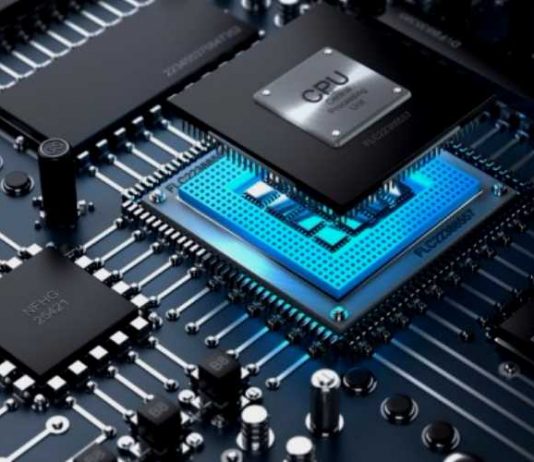If you visit the web’s most widely read computing tech blogs, you’re almost guaranteed to run into a common theme: overclocking.
Overclocking, or the act of speeding up the native rate at which your CPU runs, was once the sole domain of gamers and overworked workstation owners. Thanks to increased interest in customization, it’s now far more common.
Of course, that doesn’t mean you can merely dive into the BIOS and change settings at random. CPUs are designed with specific operating parameters in mind, so you’d be well-advised to accommodate their needs. Here’s why Vcore, or the core voltage of your CPU, is such an essential part of performance tuning.
Contents
Vcore and CPU Basics
CPU chips are designed to operate at specific voltages. As in most electrical components, however, CPU voltage requirements don’t exist in a vacuum. These specifications relate to several factors, including the types of low-level logic gate transistors used in a given device and the power draw requirements.
To further complicate things, most CPUs ship configured to run at a specific voltage, known as VID. This value may not always be the same as the Vcore currently being supplied to the chip.
Manufacturer-determined VID settings are the primary safety standard. Although you might void your warranty by using a Vcore that deviates significantly, most modern hardware producers promote their chipsets as being functional within a range of voltages — As long as you purchase an unlocked CPU, you can overclock.
How Does Voltage Relate to Clock Speed?
Most CPUs follow general proportionality rules of thumb. For instance, the heat emitted by a CPU is usually proportional to the amount of current that it consumes. Since most electronics are designed to have constant resistances and impedances, it stands to reason that more voltage equals more current and more power.
As CPUs operate at higher clock speeds, their current demands increase too. In most cases, the motherboard’s BIOS software handles these fluctuations by automatically slowing things down if the chip starts getting too toasty. This process may account for a change in voltage known as Vdroop — which users can often correct using the load-line calibration features in the BIOS.
Vcore Undervoltage
Some CPUs ship with their Vcore parameters set lower than their manufacturer-approved VIDs. This practice can extend the lifetime of a processor by reducing its power consumption. It’s different, however, from using built-in features, like Intel Turbo Boost or other dynamic CPU speed scaling settings, to produce similar effects.
The Overclocking Process
Overclocking involves going into the BIOS settings at boot time and changing the target Vcore value to something higher. Upon restarting with the new parameter, the BIOS will give the CPU more juice so that it can draw more current to power faster clock cycles.
But wait! There are some critical rules to remember when you overclock:
Never Exceed the Manufacturer’s Maximum Safe Vcore Settings
When you go into the BIOS, you can usually enter any Vcore value that strikes your fancy. Although this makes fine-tuning possible, it also raises the possibility that you’ll transform your fancy device into an extremely expensive coaster. Always check the CPU datasheet before getting started.
See What Other People Have Done
Although manufacturers run a mind-numbing number of tests on their CPUs under a host of different conditions, they only publish the safest recommended usage values. Overclocking can be an adventure into uncertain territory, and it may come with unexpected side effects. Checking out other users’ experiences with overclocking your specific chipset is always a good idea — WebPurify’s recent post sharing the 22 best tech blogs is a great place to find additional tips.
Don’t Just Assume Things Magically Worked
You’ve adjusted the BIOS and rebooted. While things might initially appear to be running smoothly, you shouldn’t pop open the bubbly just yet. Fortunately, there are many CPU overclocking stability test tools that let you establish a baseline under normal conditions before you do something irrecoverable.
It’s Not About Maxing Out
Like going to the gym, overclocking isn’t about trying to push your computer to its absolute limits. Since more power consumption means faster component wear, you should aim for the lowest Vcore that lets you achieve the speed results you want.
After picking a value, decrease it by small steps, such as 0.01 volts. Once your chosen performance test suite starts failing, you can undo the last change and call it a day.
Overclock with Care
Finally, remember that Vcore isn’t the only important factor in clock speed. You should also make sure that you have a good heatsink that’s adequately seated on your chip with thermal paste, choose a reliable motherboard and ensure that your CPU is unlocked — These steps are equally crucial to your overclocking success.


